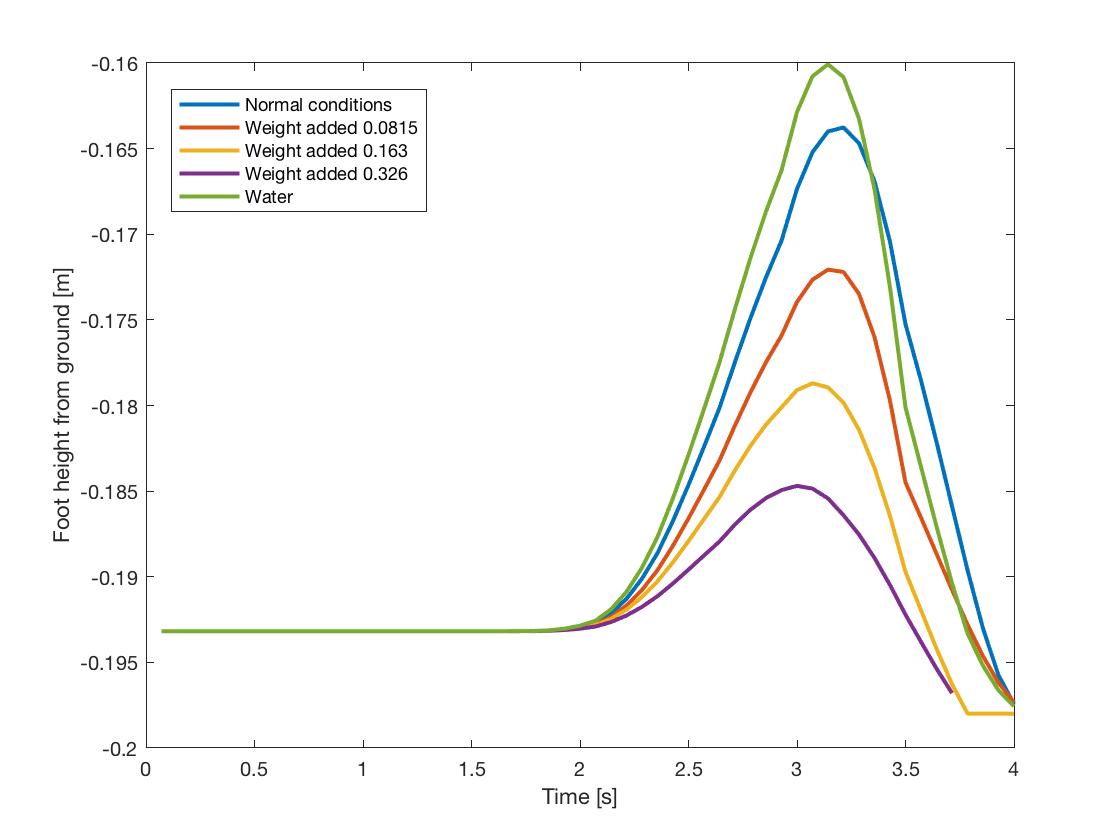Summary
Newborn and very young infants show growth at a very high rates. These body changes have behavioral consequences and more specifically consequences on the locomotion capabilities of infants. In the paper “The Relationship between Physical Growth and a Newborn Reflex” by Esther Thelen [1], the authors develop another theory proposing that the stepping reflex exist in newborn and very young infants but that the muscle gain is not proportional with the weight gain, limiting the possibility to walk. The authors conducted three experiments. In the first experiment, infants stepped while being held under the armpit (normal condition). In the second one, masses were added to the infants’ legs, which led to a decrease in stepping amplitude and rate. In the third experiment, infants were placed in water, and they showed an increase in stepping amplitude and rate.
We modeled the infant leg with a double pendulum based on simulation work by R. Alexander [2]. Our goal was see if Thelen et al.’s experimental results could be recreated by simulation (e.g. to show that leg mass increase with no muscle gain would lead to stepping amplitude decrease). The following parameters were measured in different conditions: foot clearance height, step length and joint Angles. The following results were obtained (see table and figure below; see video of simulation in Files).
| Foot clearing height [m] | Step length [m] |
Max hip flexion angle [rad] |
Max knee flexion angle [rad] | |
| Normal condition | 0.0342 | 0.0797 | 0.6173 | -0.7174 |
| Weight added: 81.5 g | 0.0259 | 0.0759 | 0.4816 | -0.6674 |
| Weight added: 163 g | 0.0193 | 0.0541 | 0.2959 | -0.6235 |
| Weight added: 326 g | 0.0133 | 0.0304 | 0.1212 | -0.5529 |
| Water condition | 0.0379 | 0.0794 | 0.6437 | -0.7479 |

Conclusion: The model showed a decrease in stepping amplitude when mass was added and an increase in amplitude when in water. Nevertheless limitations exist. The stepping rate was not implemented since infant stepping, even though existing, is a bit chaotic as can be seen in this video. Instead we implemented maximizing step length.
References
[1] E. Thelen, D. M. Fisher, and R. Ridley-Johnson, “The relationship between physical growth and a newborn reflex,” Infant Behavior and Development, vol. 7, no. 4, pp. 479–493, Oct. 1984.
[2] R. M. Alexander, “Optimum timing of muscle activation for simple models of throwing,” J. Theor. Biol., vol. 150, no. 3, pp. 349–372, Jun. 1991.
Files